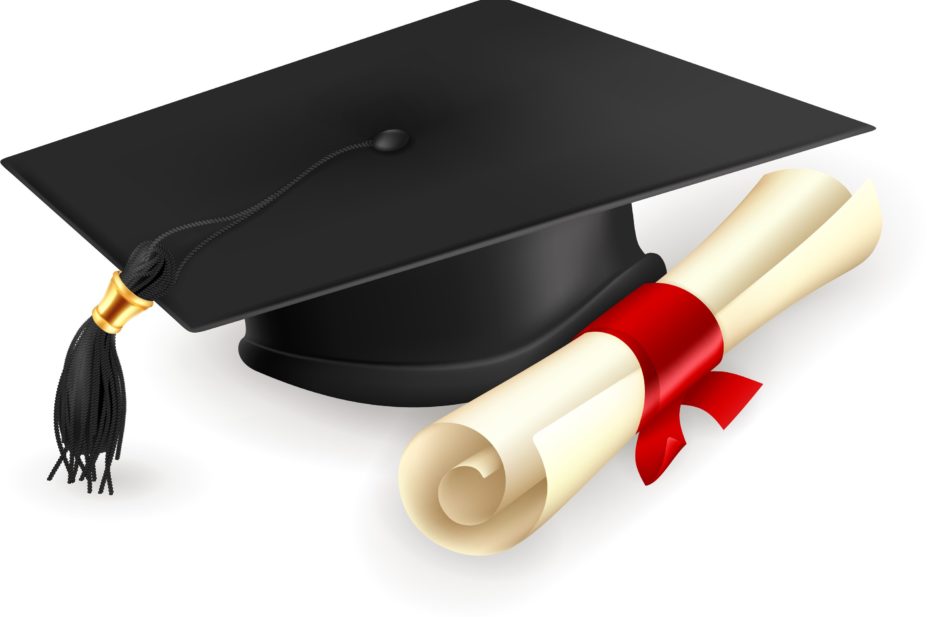
Shutterstock.com
It has been known for some time that white students are more likely to go on to receive better degrees within the UK higher education system, compared with their minority ethnic counterparts.
The subsequent impact this can have on a student’s career prospects is significant, with reduced likelihood of having access to the same opportunities available to those who have been awarded a higher degree classification.
Persistence of an awarding gap (previously referred to as the attainment gap) has led the UK government to place increasing pressure on higher education providers to reduce any differences in degree outcomes between ethnic groups.
However, the latest figures from Universities UK for the 2017/2018 academic year still report a 13-percentage-point “awarding gap” nationally between the proportion of white students getting a higher (first or upper second class) degree and their black, Asian and minority ethnic (BAME) counterparts.
In 2019, the Office for Students revealed a target for all higher education providers in England to commit to eradicating awarding gaps between white students and students from minority ethnic backgrounds by 2025. Failure to demonstrate progress can result in a financial penalty to the institution.
But what gap, if any, exists for the pharmacy degree? And if so, which ethnicities are worst affected and how can this be tackled?
Mind the gap
The Pharmaceutical Journal has run a “#PJMindtheGap” campaign since 2018, which aims to highlight and campaign for positive change in the social inequalities seen within the pharmacy profession. As part of this work, the journal requested data from the Higher Education Statistics Agency (HESA), the official UK agency for the collection of data about higher education, to determine if an awarding gap exists for students qualifying with an MPharm degree.
The data from all 4,690 students who graduated with an MPharm degree in 2017/2018 and 2018/2019, and had a recorded ethnicity, indicated that 91% of white students were awarded first class or upper second class honours, compared with 79% of BAME students over the same time period.
This 12-percentage-point gap is statistically significant (chi-squared test, P <0.01), indicating that the attainment for each group seen is not independent of ethnicity, and is comparable to the overall awarding gap seen for all UK degrees.
However, with further analysis, significantly larger gaps were observed for some groups of pharmacy students, with a 15-percentage-point gap for those with black and “other Asian” ethnicity, compared with white students, and a 14-percentage-point gap for those with “other” ethnicity (see Figure 1).
The awarding gap was smaller for those with South Asian ethnicity (11 percentage points), Chinese students (10 percentage points) and mixed ethnicity students (7 percentage points); however, for all non-white ethnicities analysed, there was a statistically significant difference in the awarding of higher degrees, compared with white students.

Figure 1 Ethnicity degree awarding gap revealed between white and BAME pharmacy students
Our analysis of Higher Education Statistics Agency (HESA) data for academic years 2017/2018 and 2018/2019 suggests there is a 12-percentage point awarding gap (also known as attainment gap) between white pharmacy students and black, Asian and minority ethnic (BAME) pharmacy students in the UK, with 91% of white students and 79% of BAME students being awarded a first or 2:1 (P<0.01). This is similar to the gap of 13 percentage points reported by Universities UK for all 2017/2018 graduates.The largest awarding gap is between black and white students, and other Asian and white students, but gaps between white students and those from all other ethnic groups are also statistically significant (P<0.01 for black, other Asian, other, South Asian and Chinese; P<0.05 for mixed).Our analysis of both national and university-level data excludes students of unknown ethnicity and does not account for other potential confounding factors e.g. socio-economic background, degree choice preference, gender, qualification on entry or international student schemes, and it does not consider students who did not complete the degree. The University of Central Lancashire and Robert Gordon University were excluded due to lack of degree classification data
There was considerable variation between pharmacy schools, with 18 schools showing awarding gaps of up to 37 percentage points in favour of white students.
However, four schools showed gaps in favour of those with BAME ethnicity of up to five percentage points. All four had a high proportion of BAME students — at least 90% for each school. Only one pharmacy school, the University of Strathclyde, showed no awarding gap on the basis of ethnicity, with a relatively small proportion of BAME students at 30% (see Figure 2).
In a statement, the Pharmacy Schools Council says that any awarding gap is “unacceptable” and that it is absolutely committed to equity of opportunity for students.
A spokesperson says: “We recognise that the responsibility lies with the universities to ensure that all our students, regardless of background, do not experience unfair obstacles, including any form of racism, within their degrees that prevent them from achieving their full academic potential.
“It is also important that universities and the pharmacy profession as a whole work together to support our BAME students and colleagues throughout their careers; it is incumbent on all of us to carefully consider how we can act to make our work and study environments as fair, supportive and nurturing as possible.”
And pharmacy schools are putting schemes in place to ensure that their BAME students do not fall behind.
The University of Reading, for example, is currently reviewing its MPharm curriculum and has recently revised lectures to include assessment of skin disorders for patients with different skin tones.
The school is also introducing additional support initiatives for BAME students from international backgrounds and is promoting increased visibility of BAME role models for students to help address the school’s awarding gap of 22 percentage points. A spokesperson says: “We have recently begun work on an institution-wide review of what more we can be doing to provide a better experience for BAME staff and students, so this important issue is very high on our agenda right now.”
The University of Nottingham has an awarding gap of five percentage points and has conducted its own detailed analyses of student demographics linked to performance. It also has an active Equality, Diversity and Inclusion Committee, chaired by its head of school, Clive Roberts.
The committee has representation from both undergraduate and postgraduate students, as well as all parts of pharmacy school staff. In a statement, Roberts said that the university and the school are strongly committed to positive action and that “we are working with our students to de-colonise our curriculum”.
In 2018, De Montfort University (DMU) was the first institution awarded the title of University of the Year for Social Inclusion by the Sunday Times for its Freedom to Achieve project. This recognition followed a 4.7% reduction in the awarding gap between BAME and white students achieving a good honours degree from 2015/2016 to 2017/2018.
However, a spokesperson says: “Any attainment gap is too much of a gap and we continue to work to further reduce this, launching Decolonising DMU, an ongoing project which encourages staff and students to examine the everyday norms of university life to identify and eliminate systems, structures and behaviours that create disadvantage for ethnic minorities.”
The school of pharmacy at Kingston University has an awarding gap of five percentage points. It has put in additional layers of support in the form of structured workshops in employability, resilience and self-empowerment, as well as wider forums where students can discuss any issues, and a personal tutor scheme themed around inclusivity.
Head of department, Reem Kayyali, says: “Across the institution we have worked hard to narrow the degree awarding gap between white students and black, Asian and minority ethnic students, and that work cannot stop until it has been eliminated.”

Figure 2: Variation between pharmacy schools in ethnicity awarding gap between white and BAME students
The awarding gap between schools of pharmacy ranges from 37% in favour of white students to 5% in favour of black, Asian and minority ethnic (BAME) students. We present summary data only on the individual pharmacy schools. We did not conduct statistical tests due to concerns about multiplicity. Queens University Belfast, Bradford University, University of Greenwich, University of Kent and Ulster University were excluded from the analysis owing to small numbers of white or BAME students
Student voices
At Huddersfield University, more than 50% of the academic staff at the school of pharmacy belong to a minority ethnic background, but this is not the case for all schools. This is a common issue which has been raised by pharmacy students, who stress the importance of being able to interact with lecturers who they can relate to and feel comfortable approaching for help.
Unekwuojo Agada, founder of the student-led Black Pharmacists Collective and fourth-year pharmacy student at the University of Manchester, tells The Pharmaceutical Journal: “I think there is something to be said about being able to build rapport with black and minority ethnic lecturers in a way that I just don’t feel I’m able to do with a lot of my white lecturers.”
Nigerian-born Agada’s female BAME academic advisor is someone Agada feels most comfortable talking to about personal issues, especially ones related to race. “I think there is just that initial level of understanding that maybe a white member of staff might not have.”
Nigerian-born third-year pharmacy student and core team member of the Black Pharmacists Collective, Tsariye Doro, says during her time at the University of Manchester, where black students currently make up 12% of around 600 pharmacy students, she has encountered only two black lecturers and four Asian lecturers, while the majority are white and male. “It does make you feel as though [black] individuals are not smart enough or are just not good enough to be in the spaces where they are the ones passing on knowledge and giving to the next generation.”
Doro, whose father is also a pharmacist, says this lack of visible BAME representation can leave students questioning where they fit into the profession and elicit feelings of isolation.
“If it is because we’re not smart enough or we’re not good enough to be in those spaces, then it does make you rethink your position on the ladder, how far you can get and the things that you want to achieve.”
Pakistani-born Ishwah Khaliq is a third-year pharmacy student and the Equality and Diversity Officer and Union Council Representative at the University of East Anglia. She expresses a need for more BAME role models: “Lack of positive role models you can relate to can actually impact not only your academic life, but your social life, and even beyond university. There is a real need to address it.”
Along with the lack of representation, students highlight a lack of awareness and understanding of the awarding gap among the wider profession.
According to Doro, the awarding gap is not widely acknowledged or discussed in pharmacy, partly because “it is not part of mainstream knowledge”. She says: “There is a lack of comprehension of what it is and what it means for institutions.”
Agada believes that, on the whole, the gap is only discussed between certain individuals. “This isn’t a very wide conversation. It’s mainly limited to either BAME groups or select members of staff who work in diversity and inclusion.”
Khaliq agrees that more visibility and transparency is required in order to bring about change and close any gaps. She believes “people should know what’s happening”. She does not believe it will be a case of criticising people but rather highlighting the issue and giving institutions an opportunity to promote any positive actions.
Why is there an awarding gap?
The underlying causes of the awarding gap in pharmacy undergraduate education are not known, but as highlighted by a number of pharmacy schools, factors in addition to ethnicity — such as degree choice, gender, geography, socio-economic background, involvement in widening participation and international student schemes — can heavily influence degree outcomes.
The University of Nottingham has identified that both gender and ethnicity play a role: “From our analysis, the gap we have comes from the performance of our white female students doing slightly better than white male, BAME male and BAME female students (these [performances] are all basically the same). Our year cohorts are typically around or above 65% female and 65% BAME.” The school regularly reviews these data in order to develop targeted initiatives to address concerns.
Kingston University School of Pharmacy has a predominantly BAME cohort of students, and focuses on value-added scores, which take into account a student’s prior entry qualifications and subject of study when assessing degree awards. This helps identify differential outcomes that cannot be explained by other factors.
While student grades on admission have been previously linked to performance at higher education, research in England suggests that even after this has been accounted for, white students still outperform their BAME counterparts.
When asked about factors contributing to the awarding gap, Elsy Gomez Campos, president of the UK Black Pharmacists Association (UKBPA), believes the factors previously highlighted by universities need to be taken out of the equation.
She says: “Everyone will come from different backgrounds and have different problems at home. Students may come from abroad, or they are supporting family members. They may be the first one to go to university in their home.
“It’s all about what people bring to the table in their skills, their willingness.”
Action is required
What has been recognised is that action is required, by students, pharmacy schools and pharmacy representative bodies alike.
Isobel Lowings, publications officer for the British Pharmaceutical Students’ Association (BPSA), says: “It’s disappointing and disheartening to see that [an awarding gap] exists. And we will commit and promise to do more as an organisation to ensure that we are inclusive of all our students, especially our black students.” Lowings says the BPSA will continue to advocate for pharmacy students until the awarding gap no longer exists.
In a consultation last year, the General Pharmaceutical Council (GPhC) outlined reforms to standards for the initial education and training of pharmacists to strengthen requirements in relation to equality, diversity and inclusion, including requiring course providers to conduct annual reviews of student performance and admissions by the protected characteristics as defined by the Equality Act 2010. The regulator is currently working to finalise these standards, which pharmacy schools will then have to implement.
A spokesperson says: “We are continuing our work to understand the factors that may affect the marks awarded to students and trainees who share particular protected characteristics, including ethnicity, and to identify what we and others can do to support students and trainees throughout their education and training.”
Amandeep Doll, inclusion and diversity co-ordinator at the Royal Pharmaceutical Society, says that strong leadership is needed to reduce the ethnicity awarding gap, with the creation of “inclusive environments” at students’ place of study.
She adds: “The significant variations in the awarding gap for BAME pharmacy students is an issue which must be addressed. It’s unacceptable and is a focus of our new inclusion and diversity strategy.
“We’ll be working with the Pharmacy Schools Council, GPhC, UKBPA, UK Black Pharmacists Collective and BPSA on this complex problem, which requires a variety of approaches.”
But while students remain hopeful, they recognise that closing the awarding gap will take time and a concerted effort.
“I’m not expecting it to suddenly change from thunderstorm to rainbows,” says Doro. “But it takes a whole team, it takes a lot of people, and you should be including those who are most affected by it.”
Schools of pharmacy approached for comment but which did not provide a response:
- Aston University
- the University of Bath
- the University of Birmingham
- the University of Brighton
- the University of Hertfordshire
- Keele University
- King’s College London
- Liverpool John Moores University
- the University of Manchester
- Newcastle University
- University of Portsmouth
- University College London
- University of Strathclyde
Methodology: Figures based on full person equivalents. Percentage point awarding gap and proportion of MPharm students calculated from raw Higher Education Statistics Agency (HESA) data. In accordance with HESA rounding methodology, all numbers relating to students have been rounded to the nearest five and all percentages rounded to zero decimal places.
Sources: HESA. The analysis was undertaken by The Pharmaceutical Journal, derived from the HESA Student Record 2017/2018 and 2018/2019. Neither HESA or HESA Services, Jisc or Jisc Services can accept responsibility for any inferences or conclusions derived by third parties from data or other information supplied by the Higher Education Statistics Agency Limited or HESA Services Limited.
Editorial adviser: Sarah Rhodes, Research Fellow, Centre for Biostatistics, University of Manchester



